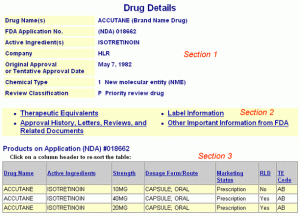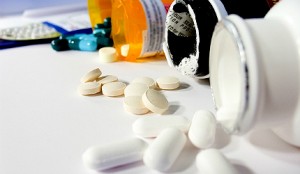Introduction
From the nineteen thirties and onwards, illegal drug use was increasingly becoming a cause of concern in the United States of America.1 The Harrison Narcotics Tax Act of 1914 aimed to control the sale of heroin and cocaine; 1937 marked the criminalization of non-medical marijuana after the Federal Bureau of Narcotics linked marijuana use with jazz music and violent crime; LSD became illegal in 1968.2 The bottom line: Drugs had become synonymous with crime. A final note is that a great deal of slang arose from drug culture, and the criminalization of drugs correspondingly transformed drug slang into a criminal language.
Drug Dictionaries
One way in which we can determine this increasing concern of drug consumption is by the corresponding increase in the production of drug glossaries during this period.3 A large percentage of this demand for drug dictionaries came from parents, teachers, prison officials, and welfare and medical professionals who regularly and increasingly dealt with the social, physical, and psychological effects of drug addiction.4 Other readers of these drug dictionaries were federal and policing agencies attempting to target international criminal networks behind the pandemic of drug trafficking that was occurring within the country.5
Drug Dictionaries – Language and usage
Drug dictionaries contained a cocktail blend of jargon and slang. The jargon portion of the dictionary came from the medical terminology and pharmaceutical names of the drugs, while the street terms for each respective drug made up the slang element in the dictionaries and word lists.6 This is logical given that professionals needed to understand the slang terms to have an idea of what drugs addicts and dealers were referring to.7 By learning the slang terms for drugs, parents could then recognize if and when their children were talking about drugs, and what kinds of drugs were being discussed. Unwittingly to the publishers, professionals, and parents, the dictionaries provided addicts and dealers with the information they needed in order to seek suitable substitutes for a given drug during times of shortage, or create synthetic substances using the chemical composition of drugs found in the reference books much in the same manner as a cook uses a cookbook.8
Drug Dictionaries – Examples
Los Angeles Police Department’s Youth and Narcotics (1952)
Created for use by the police, this report examines, as the title suggests, drug use amongst adolescents. The report is based on case studies from police files, and makes a point of emphasizing the danger that Los Angeles’s foreign borders and international airports pose; they are gateways for the illegal drugs to enter the area into the hands of teenagers. (Coleman Vol IV, 296).9 Of especial interest is the glossary of this report, which includes approximately 185 headwords of drug-related lingo used by teenagers.9 These terms include words like “buzzing” (trying to make a purchase), and “tea-head” (a marijuana addict or user).10
Charles L. Winek et al., A Glossary of Drugs
 Winek created this pamphlet with the intention to create an educational aid for parents and teachers and students.11 It begins with a brief introduction with four separate glossaries: ‘general terms’ (e.g. delusion, stimulant), ‘drugs and chemicals’ (e.g. Dexedrine, laudanum), ‘drug abuse terminology’ (e.g. delirium, withdrawal symptoms) and ‘slang terms’.12 One example entry is included below: BLUE VELVET – mixture of elixir terpin hydrate and codeine, and an antihistamine (pyribenzamine); or paregoric acid and antihistamine.13
Winek created this pamphlet with the intention to create an educational aid for parents and teachers and students.11 It begins with a brief introduction with four separate glossaries: ‘general terms’ (e.g. delusion, stimulant), ‘drugs and chemicals’ (e.g. Dexedrine, laudanum), ‘drug abuse terminology’ (e.g. delirium, withdrawal symptoms) and ‘slang terms’.12 One example entry is included below: BLUE VELVET – mixture of elixir terpin hydrate and codeine, and an antihistamine (pyribenzamine); or paregoric acid and antihistamine.13
Sydney Coden’s The Drug Dilemma (1969)
This reference book was written for teachers and student counselors and teachers.14 In his work Coden looks at social changes that might lead young people to experiment with drugs.15 This book is largely rhetorical and alleges that drug use is a sign of emotional immaturity, and warns of the dangers of chasing “the ultimate high”.16 The glossary contains approximately 125 headwords, and has no separate introduction or explanation.17 Entries include definitions such as the Man (the police), and Tripping out (high on psychedelics).18
Conclusion
Drug dictionaries can be seen as an evolution of the cant dictionary. While not explicitly stated within the dictionaries, the association of drugs and crime, and the prevalence of drug-related crime from criminalizing drug use and possession, invariably sets drug slang as a criminal language. The function of drug dictionaries as seen by the above examples is primarily as a tool to educate teachers, parents, and professionals to better help them deal with drug addicts, but equally, they were being used by drug dealers and addicts to help them create and substitute different types of substances.
1 Coleman, Julie. A History of Cant and Slang Dictionaries, Volume IV 1937 – 1984. New York: Oxford University Press, 2010. Page 291
2 Coleman, Vol. IV, 292
3 Coleman Vol. IV, 291
4 Coleman Vol. IV, 291
5 Coleman Vol. IV, 291
6 Coleman Vol. IV, 291
7 Coleman Vol. IV, 291
8 Coleman Vol. IV, 291
9 Coleman Vol IV, 296
10 Coleman Vol IV, 296
11 Coleman Vol. IV, 300
12 Coleman Vol. IV, 300
13 Coleman Vol. IV, 300
14 Coleman Vol. IV, 302
15 Coleman Vol. IV, 302
16 Coleman Vol. IV, 302
17 Coleman Vol. IV, 302
18 Coleman Vol. IV, 302

